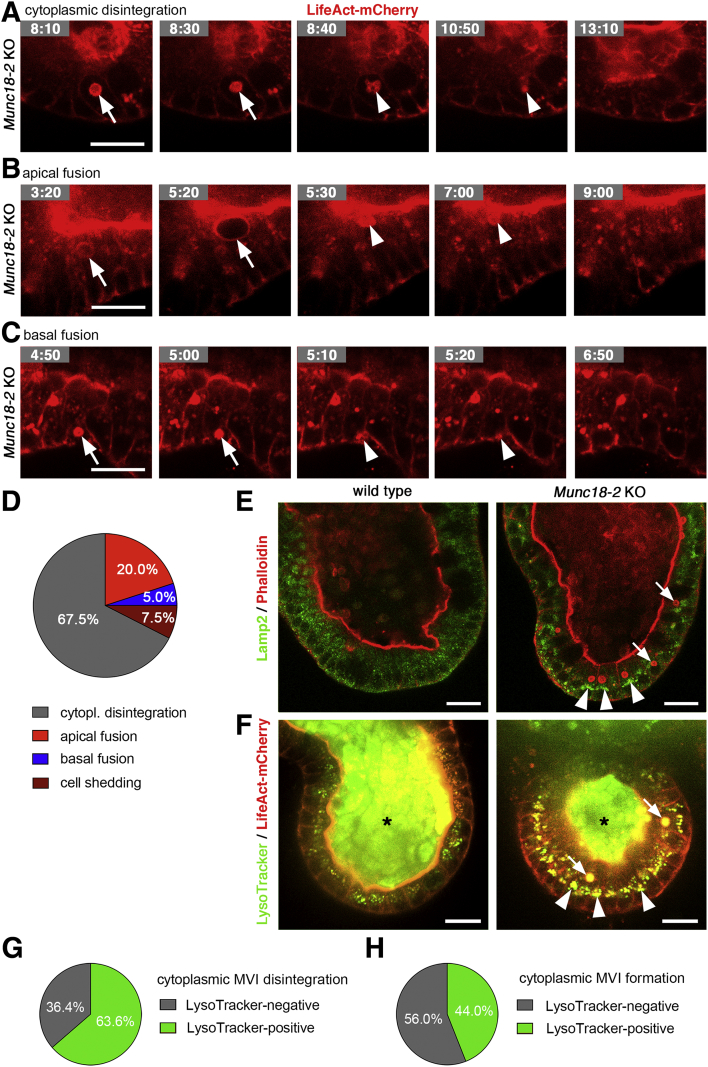Figure 10.
Dynamic characterization of MVI disappearance and association with lysosomes. (A–C) Still images from time-lapse microscopy of individual MVIs (as in Figure 9) show (A) cytoplasmic disintegration, and (B) apical or (C) basal fusion. LifeAct-mCherry–expressing Munc18-2 KO organoids (see Supplementary Movie 6, Supplementary Movie 7, Supplementary Movie 8). Arrows indicate MVIs that were tracked and arrowheads mark their remnants. (D) Relative frequencies of MVI disappearance in the cytoplasm, by fusion to apical/basal membranes or by cell shedding (determined in n = 40 MVIs). (E and F) Confocal imaging of lysosomes and MVIs in differentiated organoids (3 days VPA + IWP-2). (E) Lamp2 (green) and Phalloidin (red) staining on fixed cells. (F) Time-lapse imaging of LysoTracker (green) and LifeAct-mCherry reporter (red). Enlarged lysosomes were observed in differentiated Munc18-2 KO organoids (arrowheads). Note the LysoTracker signal in the organoid lumen (asterisks) and in MVIs (arrows). (G) Association of lysosomes with cytoplasmic MVI disintegration (see Supplementary Movies 10 and 11). MVIs (n = 22) were scored positive if LysoTracker stained their cytoplasmic remnants. (H) Association of lysosomes with cytoplasmic MVI formation (see Supplementary Movies 11 and 12). MVIs (n = 25) were scored as positive if LysoTracker stained their cytoplasmic precursors. Scale bars: 20 μm. All live-cell imaging experiments were performed at least 3 times independently.

